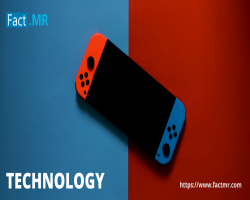Evolution of Digital Marketing: What’s Next?
Explore the evolution of digital marketing from its early days to today's data-driven strategies. Discover emerging trends and what the future holds for marketers.
Digital marketing has transformed dramatically over the past few decades, evolving from simple online advertisements to a complex ecosystem that leverages data, technology, and consumer behavior. As we look to the future, it’s essential to understand how digital marketing has evolved and what trends and innovations are on the horizon. In this blog post, we will explore the key milestones in the evolution of digital marketing and discuss what’s next for this dynamic field.
The Early Days of Digital Marketing
1. The Birth of the Internet (1990s)
The 1990s marked the beginning of the internet era, and with it came the first forms of digital marketing. Businesses started creating websites to establish an online presence. Early digital marketing efforts were primarily focused on banner ads and email marketing, which were groundbreaking at the time.
2. Search Engine Optimization (SEO) Emerges (Late 1990s)
As search engines like Google began to dominate, the importance of SEO became apparent. Marketers started optimizing their websites to rank higher in search results, leading to the development of various SEO strategies and practices.
The Rise of Social Media and Content Marketing
3. Social Media Revolution (2000s)
The advent of social media platforms like Facebook, Twitter, and LinkedIn transformed the digital marketing landscape. Brands began to engage with consumers directly, fostering relationships and building communities. Social media marketing became a vital component of digital strategies.
4. Content Marketing Gains Traction (Mid-2000s)
With the rise of blogs and online content, businesses recognized the value of providing valuable information to attract and retain customers. Content marketing emerged as a strategy to educate, inform, and engage audiences, leading to the creation of high-quality blogs, videos, and infographics.
The Era of Data and Personalization
5. Data-Driven Marketing (2010s)
The 2010s saw a significant shift towards data-driven marketing. Marketers began leveraging analytics tools to gather insights about consumer behavior, preferences, and demographics. This data allowed for more targeted and personalized marketing campaigns, improving engagement and conversion rates.
6. The Rise of Mobile Marketing
As smartphones became ubiquitous, mobile marketing emerged as a critical focus for brands. Mobile-optimized websites, apps, and location-based marketing strategies became essential for reaching consumers on the go.
Current Trends in Digital Marketing
7. Influencer Marketing
Influencer marketing has gained immense popularity, with brands partnering with social media influencers to reach their target audiences authentically. This trend leverages the trust and credibility that influencers have built with their followers.
8. Video Marketing
Video content has become a dominant force in digital marketing. Platforms like YouTube, TikTok, and Instagram Reels have made video marketing accessible and effective for brands looking to engage their audiences visually.
9. Artificial Intelligence and Automation
AI and automation are revolutionizing digital marketing by enabling personalized experiences at scale. Chatbots, predictive analytics, and automated email campaigns are just a few examples of how technology is enhancing marketing efforts.
What’s Next for Digital Marketing?
1. Hyper-Personalization
As consumers demand more personalized experiences, brands will need to leverage advanced data analytics and AI to deliver hyper-personalized content and offers. This will involve understanding individual preferences and behaviors to create tailored marketing strategies.
2. Voice Search Optimization
With the rise of voice-activated devices like Amazon Alexa and Google Assistant, optimizing for voice search will become increasingly important. Marketers will need to adapt their SEO strategies to accommodate conversational queries and long-tail keywords.
3. Augmented Reality (AR) and Virtual Reality (VR)
AR and VR technologies are set to transform the way consumers interact with brands. From virtual try-ons in fashion to immersive experiences in travel, these technologies will create new opportunities for engagement and storytelling.
4. Sustainability and Ethical Marketing
As consumers become more environmentally conscious, brands will need to prioritize sustainability and ethical marketing practices. Transparency, social responsibility, and eco-friendly initiatives will play a significant role in shaping consumer preferences.
5. Continued Emphasis on Data Privacy
With increasing concerns about data privacy and regulations like GDPR and CCPA, marketers will need to navigate the balance between personalization and privacy. Building trust with consumers will be essential for successful digital marketing strategies.
Conclusion
The evolution of digital marketing has been marked by rapid changes and innovations, driven by technology and consumer behavior. As we look to the future, embracing emerging trends and adapting to the evolving landscape will be crucial for brands seeking to connect with their audiences effectively. By staying informed and agile, marketers can harness the power of digital marketing to drive growth and success in an ever-changing environment.
What's Your Reaction?




















